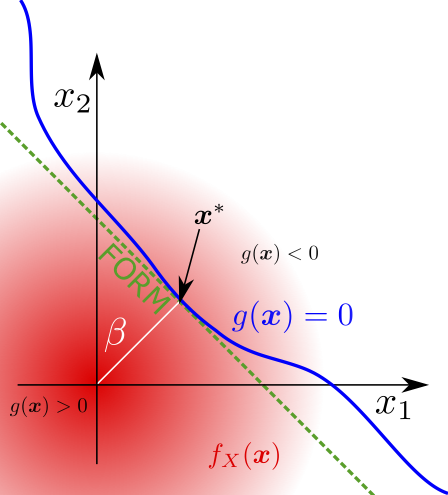Conclusion¶
The purpose of this book is to explain how uncertainty quantification can be accurately and reliably achieved for engineering systems, when the available data is of poor quality or if a limited quantity of data is available. The computational techniques required to perform this simulation in a feasible computational time are of particular importance. The developed uncertainty quantification techniques have been discussed in the context of reliability engineering, however the potential applications of these techniques are much wider than this.
Chapter Models of Uncertainty presented a review of uncertainty models which model joint uncertainty of unknown variables (e.g. generative probabilistic models, convex sets and probability boxes). Techniques for general computation with such models are described. The construction of such models with or without experimental data was discussed.
Chapter Machine Learning of Regression Models discussed techniques to create uncertainty models, where the uncertainty in one variable is dependent on the uncertainty in other variables. These models include Bayesian regression, neural networks, Gaussian processes and interval predictor models. Techniques to validate the performance of these models is discussed.
Chapter Reliability Analysis presented a state of the art review of techniques for reliability analysis, where the probability of failure of a system under the influence of uncertainty is calculated. Reliability measures were discussed for probabilistic models, convex set models and imprecise probability models. Efficient computational techniques were discussed for performing the simulation required to calculate the reliability of expensive black-box models of systems.
Unanswered questions¶
The field of uncertainty quantification is still developing, and undoubtably many future interesting applications of uncertainty quantification are yet to be made.
There are several areas where development is likely to focus in future:
Further application of the latest developments in neural networks and Gaussian processes to engineering.
Algorithms amenable to massive data sets, particularly algorithms involving imprecise probabilities.
Further development and application of imprecise probability models in some form, though they may not be labelled explicitly as such.
What should I read next?¶
After reading this book and being presented with an overview of the field, engineers may be searching for further reading material. A useful recommendation is largely dependent on the interests of the reader. Readers with a general interest in statistics may benefit from reading textbooks such as [9], [7], [8] and [1]. Readers wishing to understand more about engineering applications of uncertainty should refer to [86] or [106] (many similar books exist). For those in industry, whitepapers from government organisations may also be informative. For those beginning a postgradutate programme of study, I highly recommend reading the original papers for techniques of interest and then reviewing the code of open source software libraries such as [130].
